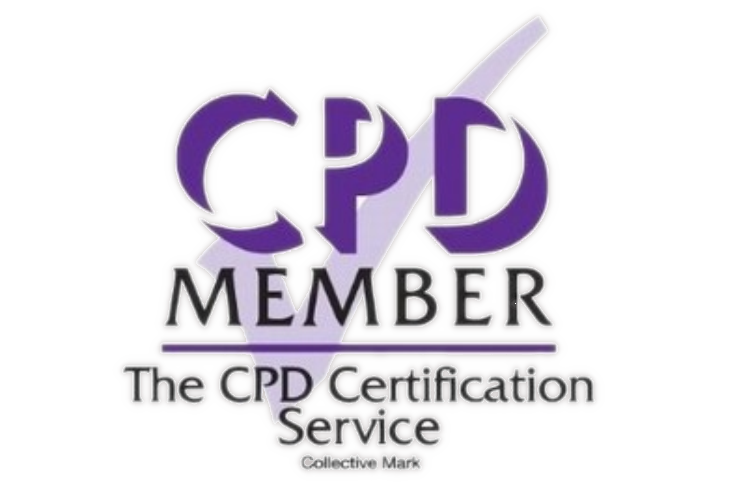Accredited Certificate in Operating Model Development (OM)
4.9 Star rating
Course dates & Locations:
- 4 - 6 May 2025 (9:30 - 11:30 pm KSA Time)
Language:
Arabic
Fees
$ 105 USD
- Study Method: Online
- Duration: 3 Days
- Certifications: CPD Certified
For enquiries contact us at:
- Tel: +441642254246
- Tel: +447717071592
- Email: [email protected]
- Website: www.certe.com

Global Consulting Expertise Spanning Over 30 Years

An International Center of Excellence Based in London, UK

Accredited Member of CPD
Client Rating: 4.9/5
Strategic Partner to Leading Global Consulting Firms
What you'll learn
-
Understand the key components of an operating model.
-
Align the operating model with strategic goals.
-
Map and optimize business processes.
-
Design people-focused organizational structures.
-
Leverage technology for operational efficiency.
-
Establish governance and performance systems.
-
Enhance customer and stakeholder experience.
-
Adapt the operating model to changing needs.
-
Implement solutions that enhance organizational efficiency, productivity, and value delivery.
Course Overview
Course Topics
Operating Model Definition
- What is an operating model?
- The role of an operating model in translating strategy into execution
- Distinguishing between business model, operating model, and organizational structure
Importance of Operating Model
- Connecting strategy to day-to-day operations
- Supporting scalability, agility, and resilience
- Enhancing efficiency, customer experience, and organizational alignment
- Enabling digital transformation and innovation
Key Elements of an Operating Model
- Overview of the foundational components that form an integrated operating model
- How these components work together to deliver value
Strategy
- How strategy informs the design of the operating model
- Aligning operational capabilities with strategic intent
- Translating strategic goals into operational realities
Process
- Role of core and support processes in value creation
- Designing efficient, standardized, and customer-centric processes
- Mapping and optimizing processes to align with strategic goals
People
- Workforce planning, roles, and responsibilities
- Talent capabilities required to deliver the operating model
- Change management and people alignment strategies
Technology
- Role of technology as an enabler of the operating model
- Choosing the right digital tools and platforms
- Ensuring interoperability, scalability, and alignment with business needs
Governance
- Decision-making frameworks, accountability structures, and oversight mechanisms
- Ensuring alignment, compliance, and risk management
- Governance models that support agility and empowerment
Customer & Stakeholder Experience
- Designing the operating model around customer needs and expectations
- Understanding customer journeys and touchpoints
- Aligning internal operations to deliver superior external experiences
Organizational Structure
- Structuring teams, functions, and reporting lines
- Centralized vs. decentralized models
- Building structures that support collaboration and performance
Financial Model
- Linking financial planning, budgeting, and cost structures to operations
- Ensuring cost-efficiency and financial sustainability
- Resource allocation aligned with strategic priorities
Data & Insights
- Role of data in driving operational decisions
- Designing data flows, analytics capabilities, and performance dashboards
- Building a data-driven culture to support continuous improvement
Culture and Values
- Embedding organizational culture into the operating model
- Aligning values, behaviors, and performance expectations
- Shaping culture to support strategy and transformation efforts
Interconnections Between Operating Model Elements
- Understanding how each component influences others
- Managing trade-offs and synergies across elements
- Ensuring coherence and alignment in design and execution
Overcoming Challenges in Implementation
- Common pitfalls and barriers in operating model transformation
- Change management and stakeholder alignment
- Strategies for successful adoption and sustainability
Steps to Design an Effective Operating Model
- Diagnosing current state and defining future state
- Conducting capability assessments and gap analysis
- Prioritizing design principles and transformation levers
- Designing and validating the new model
Phases of Operating Model Development
- Discovery and assessment
- Design and prototyping
- Implementation planning
- Rollout and monitoring
- Iteration and refinement
Industry-Specific Applications
- Customizing operating models for sectors such as:
- Government and public services
- Healthcare
- Financial services
- Oil & gas
- Logistics and supply chain
- Addressing sector-specific regulatory, operational, and customer requirements
Who should attend
-
Business Leaders & Executives shaping organizational strategy.
-
Strategy & Transformation Managers leading operational changes.
-
Business Analysts & Consultants designing and optimizing operating models.
-
Project & Program Managers overseeing business transformation.
-
Process Improvement Specialists enhancing efficiency and effectiveness.
-
Enterprise & Solution Architects aligning business and IT frameworks.
-
Anyone involved in organizational design, restructuring, or operational strategy.
Course Certification & Accreditation
-
Course completion certificate issued by CERTEGLOBAL.
-
CPD accredited certificate.
This course includes
- Live interactive online training at a scheduled time, delivered by an expert trainer.
- Comprehensive training materials available in PDF format for easy review and reference.
- Access to recorded sessions for six months after course completion, allowing flexible content review.
- Practical assignments and exercises to reinforce learning and apply key concepts effectively.
- Ongoing support from the instructor and customer service team throughout the course for a seamless learning experience.
- A prestigious training certificate issued by the course provider and internationally recognized accreditation bodies.
Top companies offer this course to their employees





What Our Clients Say About Us
4.9 out of 5 Star Rating






Instructor

- 5/5 stars Instructor Rating
- 3000 Reviews
- 5000 Students
- More than 500 Courses
Dr. Nasreddin Dhafr is a consultant, training instructor, coach and speaker with multiple decades of progressive experience in strategy development and execution, performance management, and organisational excellence. He led various consulting and development projects in government, public and private sectors across UK, Europe, the Middle East, and Africa. Key areas of his expertise include:
Functional experience: organizational excellence, strategic planning and execution, performance management and KPIs, benchmarking, and strategic leadership development.
Industry experience: Consultant, trainer at CERTEGLOBAL and various other organizations. Chairman of CERTEGLOBAL, University Lecturer, Director of Oil & Gas Engineering Service Company, Director of Travel Service and Tourism Company, Former operations manager in leading oil and gas company.
Countries: UK, KSA, UAE, Oman, Libya, Nigeria.
